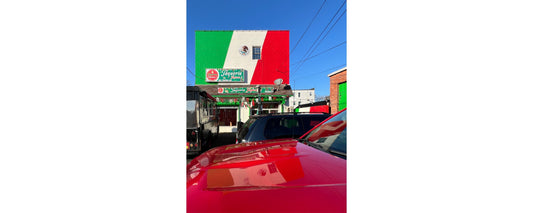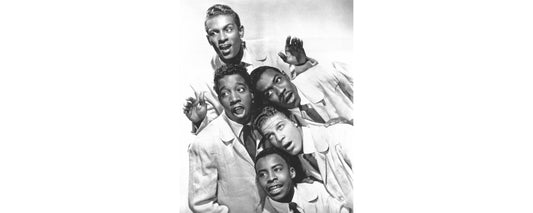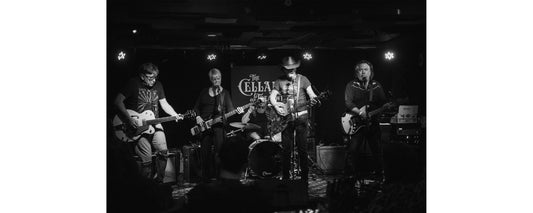Alan Radin makes house calls. He takes with him his entire workshop—pigments, chemicals, glues and fills, plus brushes, tools, hardware and anything else he might need—in a van emblazoned with the logo for his Orange-based business, Alan Radin’s Furniture Touch-Up. For customers who have called him about nail polish remover spills, pizza box-shaped clouds or cat scratches on their antique dining room table, this is the nicest feature of the operation—the fact that the spots or gouges can be made to disappear while the table remains exactly where it is.
The typical treatment for a distressed table is to refinish it, which means moving it out to the garage or hauling it to a shop to have all of its color laboriously sanded away and a new stain applied. Restoring is the quiet alternative that uses pigment to paint over problem areas, deftly hiding the source of distress while leaving the rest of the table unchanged.
sponsored by
The process, Radin explains, begins with a layer he compares to a primer coat. “Now I’ve hid the problem, but I’ve got this big, orange-y mush, like a pumpkin.” He then proceeds from bigger movements to tinier ones, seeing several colors in what appears to be a uniform natural finish and brushing those colors in to blend with the rest of the table. Toward the end of the painting process, he’s recreating individual lines of faux wood grain. “I’ll take my graining and I’ll brush it. Then while it’s wet, I’ll take my glove and feather it out, feather it out.” Meanwhile, he’s blended his finishing pigments with polyurethane and tailored his brushwork to achieve the ultimate benefit of onsite restoration: the ability to match the reflectivity of the section he’s restored to that of its neighboring surfaces given the peculiar light sources in the room where the piece lives.
The wooden box that accompanies Radin to his jobs carries like a briefcase with a draw latch and a leather handle, but it opens to become a piece of furniture in itself, interior shelves tinkling with tiny glass bottles of pigment. The box is older than the business, which is over 30 years old. Barry Radin, Alan’s older brother, was The Furniture Doctor, a venerable practitioner in the Westville area, who only just retired after 45 years. Alan started working for Barry at 12 years old, sanding furniture on weekends for five dollars plus ice cream. He helped his brother throughout high school and college, then moved around the country “wherever the sun shined” with his then-future wife. By the time he returned, his brother needed somebody to manage the business at its Fitch Street location while he set up a new location on Derby Avenue.
Months later, in a second stroke of good timing, the business got a call from IBM. “They were big in Hamden at the time,” Radin recalls. “This was probably ’83 or something.” The computer technology giant needed someone to come out and restore some of its conference tables, which were scratched up and “too big to bring in.” At the same time, The Furniture Doctor began getting calls from moving companies with pianos they had scratched en route to new living rooms. “So I took some touch-up courses and we made this kit that I have. And that’s when it just got big enough where we just kind of divided and I became the guy that does everything out and he was still the inside shop guy.” The younger Radin’s touch-up business grew to include kitchen cabinets, college campus building interiors, doors and pews in churches and synagogues and even the fancy blackjack seating at the new casino in Springfield, Massachusetts. He also does the structural repairs that The Furniture Doctor once did, meaning he can act as both a medical doctor and a plastic surgeon.
On a recent job, Radin reassembled the broken back of a chair first to establish an order of operation. He zeroed in on a crack in the outer rail, combining wood glue with a tiny amount of crazy glue to speed up the drying time. “I got to get this piece integrally strong first so I can count on it sooner,” he explained. He didn’t assemble all the chairback’s pieces again until he had replaced the dowels that joined the central piece to the seat. This required drilling through the original dowels—broken and lodged in their holes—to leave slightly bigger holes in their place, then segmenting a slightly bigger dowel he had produced from somewhere in his kit. To get the central piece to sit nice and square over its new joinery, and to get it to lean back into its old line with the top rail, he inserted and pulled out the new dowel pieces three or four times so he could reshape the holes, using the drill as a sculpting tool.
Only then did he begin gluing in earnest. “I always fit everything together like a kit—a little puzzle that I made—before I go to glue,” he says, because, while adjustments can be made after glue has been applied, Radin likens it to dismantling and reassembling a grilled cheese sandwich. “It will never be the same.”
For good measure, in order to declare the chair structurally sound, Radin drilled a tiny horizontal screw through the cracked side rail of the chair and the dowel resting inside it. He then mixed brownish and reddish wax together and pressed them into the hole behind the head of the screw. He pressed more wax into the crack next to the screw and into joinery seams around the chair, using his thumbnail to plow away the excess. Finally, he tinted water-based polyurethane with pigment, brushing the elements together on a sheet of newspaper, then brushed the mixture over the wax, erasing first the holes, then the traces of their erasure.
A half hour had gone by while the chair’s owner watched CNN in another room. Between blankets on the floor, a folding table with his box opened across it and a soft soul-pop playlist on his phone, Radin had indeed created his own temporary shop.
Or, maybe not so temporary. When the job was done, the customer emerged, saw the chair whole and unblemished and was immediately thinking of other pieces around his house that could use Radin’s restorative touch.
Alan Radin’s Furniture Touch-Up
Mon-Fri 8:30am-5pm
(203) 988-8436
www.ctfurnituretouchup.com
Written by David Zukowski. Images 1-2 photographed by David Zukowski. Before-and-after image provided courtesy of Alan Radin.








